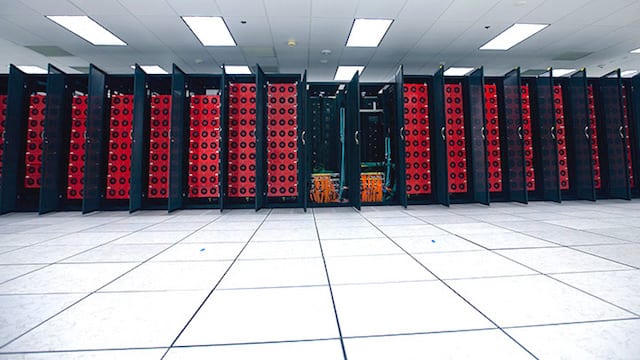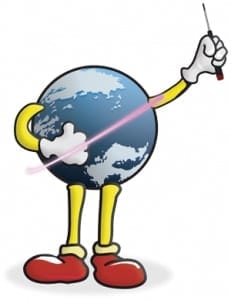![]() Like death and taxes, there’s one more thing that’s an absolute in life – all hard disk drives (HDDs) will eventually fail. It’s not a matter of “if” the drive will fail, just “when” it will stop working. That’s why we are so insistent on making sure that readers of the Rocket Yard are aware of the necessity of making backups. In this post, I’ll show you some amazing statistics from online backup firm Backblaze. This company has tens of thousands of HDDs spinning away in its proprietary Storage Pods at any particular point in time, and once a day they take a “snapshot” of the status of each of the drives. From the daily data, there are some statistics that can be generated to show just how long a typical drive will last.
Like death and taxes, there’s one more thing that’s an absolute in life – all hard disk drives (HDDs) will eventually fail. It’s not a matter of “if” the drive will fail, just “when” it will stop working. That’s why we are so insistent on making sure that readers of the Rocket Yard are aware of the necessity of making backups. In this post, I’ll show you some amazing statistics from online backup firm Backblaze. This company has tens of thousands of HDDs spinning away in its proprietary Storage Pods at any particular point in time, and once a day they take a “snapshot” of the status of each of the drives. From the daily data, there are some statistics that can be generated to show just how long a typical drive will last.
The Data
If you’re a data cruncher who likes to run your own numbers, then download and take a look at the raw data files that are available here. This is a lot of data; there are files for every day of the year, and each file is about 15MB in size…and growing as time goes on and more drives are added to the storage farm. Fortunately, Backblaze supplies a SQL (Structured Query Language) schema for the data, so if you’re a whiz at SQL you can set up mySQL on your favorite Mac and run your own queries (or you can use the SQLite engine built into OS X, but that’s fodder for another post).
With over 61,590 operational hard drives (that was the number when the last quarterly report was written), it’s a pretty sure bet that at least one and probably more Backblaze HDDs will fail in the storage farm each day. To get an idea of the scale of the number of hours of operation, the Backblaze data center’s HDDs logged over one billion hours of operation in the first quarter of 2016 alone.
The Failure Rates
What’s considered to be a “failed” hard drive? Backblaze has three reasons why a drive is considered to have failed:
- It won’t spin up or connect to the OS
- The drive won’t sync or stay synced in a RAID array
- The S.M.A.R.T. statistics from the drive shows values above their threshold. S.M.A.R.T. stands for Self-Monitoring, Analysis, and Reporting Technology and it’s a great way to determine when a drive is beginning to fail so that it can be replaced prior to failure.
The company computes annual failure rates by dividing the number of drive failures by the number of “drive days” of operation, then multiplying by 365 days in a year. One drive operating one day equals one drive day of operation.
For a company like Backblaze, there are a lot of drive days — there were 5,278,120 drive days observed between January 1, 2016 and March 31, 2016. During that time, out of 61,523 hard drives (they don’t calculate drive models for which they have less than 45 drives), there were 266 failures for an annual failure rate of 1.84%.
What Do The Stats Show?
An annual failure rate of 1.84% doesn’t sound like much, and in fact Backblaze made a point of stating that the overall annual failure rate is the lowest quarterly number they’ve ever seen. That can be seen as a sign that hard disk drives are becoming more reliable. But that still means that for Backblaze, about 61,523 x .0184 or 1,132 drives are going to fail!

That annual failure rate doesn’t sound like much, but think of the differences between your Mac and their data center. All of the drives in the data center are cooled in their Backblaze Storage Pods or Vaults (see image above, each Vault contains 1,200 drives), get very steady power, and have backup power in case the outside power goes out. Your Mac drive is subject to all sorts of voltage and amperage variations, even spikes thanks to electrical storms. Things get even worse if you’re thinking about a hard disk drive in a MacBook of some sort, since the constant movement as you carry the laptop around can be stressful to the drive. Fortunately, new MacBooks are all going to Solid State Drives (SSDs), which have no mechanical parts to break.
How Long Will My Drives Last?
Let’s talk about your drives. HDD lifespan depends on many things, like the brand, type, size and the interface method used, but Backblaze found that about 80% of the drives being used in their infrastructure lasted four years. That means that 20% didn’t, most dying in their third year of life. On average, you’re looking at a drive lifetime of four years.
Now if you’re not using your HDD each and every day, the lifetime is going to be longer. For example, if you make a full backup of a Mac onto an external HDD, then unplug it and place it on a shelf in a climate-controlled environment, it’s going to last for a lot longer than four years. It’s recommended that you take the drive out once in a while, plug it in, and spin it up just to make sure that the drive platter mechanism is properly lubricated.
As for SSDs, TechReport recently did an endurance test on these non-mechanical storage devices and found that they can last for about 50 years of normal use! Of course, we haven’t had SSDs around for that long, but that’s pretty incredible to think about.
For the drives that are sitting turned off on a shelf in an air-conditioned vault, the eventual issue might be that there’s no way to interface with the drive. Just think of the old drive interfaces that have gone by the wayside over the years, and you realize that it may be difficult to plug a drive in at some point in the future. Hopefully, there will be adapters in place to keep our future computers talking to old drives.
The Bottom Line
The bottom line is that if you have a Mac with an HDD, it’s reasonable to expect that drive to last an average of four years. It could last longer, or it could fail in the first year of life of your new Mac (fortunately, it will still be under warranty). That’s why you need to really have a good backup plan, hopefully with multiple backups on different media and online.
Stay safe out there, folks!
Many thanks to Backblaze for allowing The Rocket Yard to use their statistical information.








Hello, Great. I was searching the solution, how to remove this problem. Your website is very helpful for me. Thank you so much for sharing the solution.
SSDs will eventually fail, too! Ferrite cells do not have all that long a lifespan.
It is good to be aware of the average lifespan of HDD… manufacturers don’t publish these nor give an average lifespan of the product.
The advent of SSDs have given hope to us, consumers for the preservation of data for posterity’s sake.
Thank you for the information.
I would not like readers to get the impression SSDs are infallible. 50 year lifespan? Hmmm. When the hard drive failed in my daughter’s 4 yr old Macbook, we replaced with an Aura 480GB SSD. This failed in TWO years. Thankfully the OWC 3 year warranty covered it.
Thanks for sharing useful information
Hard Disk Protector Software is really well-done and meets all the demands concerning Hard Disks. I have recommended HD Protector Software for all data storage computers.
I survived with not spinning of Hard Drive. My WD 2TB HD was making this strange noise and I found that head of the HD got damaged and I could not access my hard disk. My official data inside was so important for me that my job was at stake. Then I decided to go for software which can recover data in few hrs but nothing worked. I heard about Stellar hard drive recovery services and send my disk there. It was worth a penny. All I can say it was a miracle. I recovered every bit of my data and realized the value of taking backup of data.
Very informative article. Thanks.